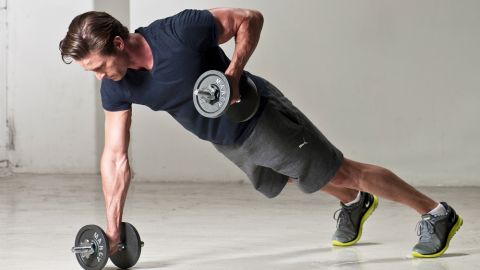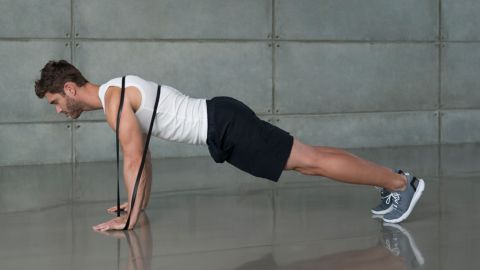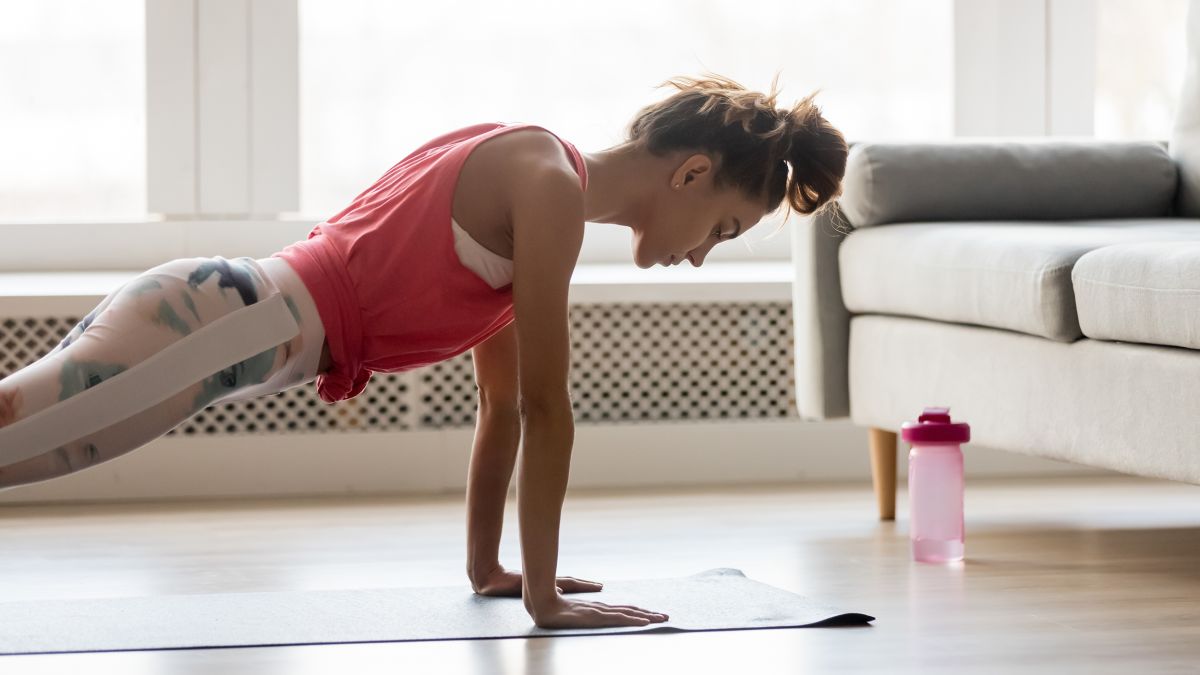There are situations where we don’t have access to training facilities. Holiday periods are the most common but Global Pandemics and severe weather events are now also something we must deal with. Many individuals will be severely affected by these logistical complications. Despite the inconvenience we must find a way to make progress and retain our fitness and strength when conditions are unfavorable.
The most obvious issue with training from home is the equipment available. Most of us do not have a full suite of modern gym equipment. Some of us might have a basic dumbbell set or a resistance band and not much else. We may also feel the loss of our regular training environment which for some can make training extremely off putting.
As well as reasons for being put off training, considerable time can pass without training and you can begin to see a loss of fitness without regular stimulus. You must make some attempt to achieve some level of training frequency if you want to avoid any detraining.
Here are some of our top tips for training effectively at home.
1. Progress not perfection
With limited equipment you cannot expect to have the same level of complexity and structure as you would with any normal training program. You are very much at the mercy of your training/equipment restrictions. You must change your focus in order to be effective. Standard progression and planning may no longer be realistic. A more suitable approach may be to maintain general ability and give attention to smaller things which don’t regularly get attention. You cannot aim to have perfect training in these situations and you must accept that stressing about it is pointless. If you can maintain and progress in any capacity then you have been successful.
Take this opportunity to work on fine tuning specific motor skills and movements which may require more time than equipment. Balance and flexibility work never get as much time as they should and require very little equipment. Complex bodyweight work can be massively beneficial for strength, balance and coordination. If you cannot master a pistol squat or chin up now is a very good opportunity to spend time on them. The strength stimulus from these type of exercises is quite significant.

2. Warm-up more!!
An issue with many home workouts is that on many occasions they are performed outside or in a cold garage or shed. As your home training space is so close you have a tendency to jump straight into a session. For some reason when you commit to travelling to a gym you also commit more time and spend appropriate time warming up.
If you plan on training at home it should be a similar amount of time to what you spend in the gym. Do not rush a warmup just because it’s on your doorstep. This is a very fast way to pick up a minor strain that will result in more lost training and can be a significant hit to motivation.
See what makes a good warmup here
3. Creative equipment.
The modern athlete is spoiled. Gyms have shiny new equipment all finely engineered and built to make things straightforward. As a result we have lost some creativity. Many of us have more potential tools around us than we think. Here is a non-exhaustive list of unorthodox items which can be used to add resistance to many exercises.
- Cinder Block
- Wooden Logs
- Compost Bags
- Sandbags
- Sledgehammer
- Old tires
- Water Barrels
- School Bag full of text books
- Crate of water bottles
- Crate of food tins
While you may not be able to add significant resistance you can find some movements more challenging with only modest equipment.
In addition to these it is good to be prepared where possible. Resistance bands, weighted vests and some simple dumbells should be something all serious athletes acquire to cover situations like this.

4. Use overload exercises
When we train at the gym we focus on our big lifts. There is no doubt that large systemic stress on the body causes a large cascade of anabolic hormone production which is a massive adaptive stimulus. Despite this we can have a significant effect on more local muscle groups.
Exercises which overload limbs and muscles can place significant stress on the body and yield some good effect. Unilateral exercises may not achieve the same systemic load but may require extra neuromuscular input. A single leg squat will require activation of many more stabilizing and core muscles. In addition the primary muscles are still challenged to cope with a disadvantaged position and require quite large forces.
Most standard bodyweight exercise can be amplified using a number of techniques. Isometric holds are a fantastic way of increasing time under tension and metabolic stress within a muscle, which are fantastic mechanisms for stimulus. Try a simple set of ten pushups. With each rep hold at the halfway point and squeeze your muscles as hard as you can in that fixed position for 5 seconds. Very quickly you will see a significant impact on the intensity of the movement.
5. Play with work and rest
When we produce force our muscles have a demand for oxygen to contract. If we don’t get it fast enough we start to produce lactate. Lactate has an inhibitory effect on muscle so as contraction suffers more muscle must be activated to complete a task. If we perform fast explosive reps with little rest we induce this metabolic fatigue. Not only does it require more muscle activity but this metabolic stress is another stimulus for adaptation, creating more fatigue resistant properties.
Playing with our work to rest ratios can use relatively light loaded exercises to create quite a lot of intensity. This is what we take advantage of when we incorporate circuit style training into our programs. One must be careful to choose relatively low skill exercises as fatigue may promote technical failures which may lead to injury. Body weight exercises are generally good options for this style of training.
6. Get specific
As we mentioned in tip one, now is a good time to work on specific skills or movements which wouldn’t normally get attention. Highly skilled movements require a lot of practice but can be very beneficial to overall training progression. Learning to skip can be a very valuable tool and has shown to improve foot speed, agility and tendon function (All beneficial to running speed). Exercises such as Turkish getups and Pistol squats are more examples of technical lifts which may not be feasible to practice within a larger program but may now serve good purpose.
Most of the above relates mainly to strength maintenance. For most this is where the equipment restrictions will have the biggest impact. For more endurance based athletes things are a lot simpler. Most endurance athletes will be able to at least run as it requires no equipment and can be done outside. Many cyclists will have some form of indoor trainer also if inclement weather is the issue. With this in mind less of an impact will be felt. In some cases ie. Swimmers or rowers more specific equipment may be harder to come by.
The main determinant for endurance performance is aerobic capacity and efficiency. These are largely dictated by the cardiovascular system which can be maintained through alternative modalities of exercise like running or cycling. There may be some loss in function in muscles specific to certain sporting actions and movements. This is where one should try and add an element of sports specific movement patterns into their S&C work. While it will not recreate the sport it may provide enough stimulus to maintain neuromuscular patterns which are essential for efficiency of movement. A circuit which utilizes major muscle groups in some sport specific movements, combined with general cardiovascular training, can help significantly with maintenance.
It is important to keep in mind that maintaining physical characteristics requires significantly less stimulus than to build them. A little can go a long way as long as there is adequate frequency. Little and often is an effective way to make sure that neuromuscular function is maintained. This is responsible for a large proportion of our ability to produce force through movements. When muscles are regularly activated, muscular atrophy or loss is also significantly reduced, unless there is a major energy intake deficit.
In summary, you must do your best to keep doing some training to maintain what you have worked for. You may also take the time to switch focus and chase some less obvious goals so that you can make some progress. The biggest mistake when training at home is to feel that it isn’t beneficial because it sint your usual session or not heavily loaded. Many injured athletes see significant improvements during return to play protocols. Despite lacking the ability to use heavy loads many athletes achieve significant hypertrophy and strength improvements. This is often through less obvious but no less beneficial training methods.
Situations unfavorable to regular training protocols are opportunities to learn about yourself. You must be creative and find ways to achieve some progression. In doing so you might just discover less obvious mechanisms to which your body responds favorably to. While some situations may be frustrating they must not become excuses.
If you enjoyed this article then sign up to our newsletter to get notified of new articles.
[yikes-mailchimp form=”1″]
